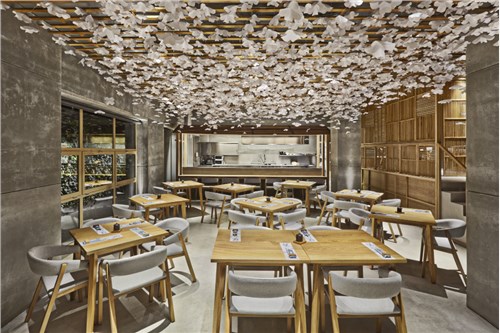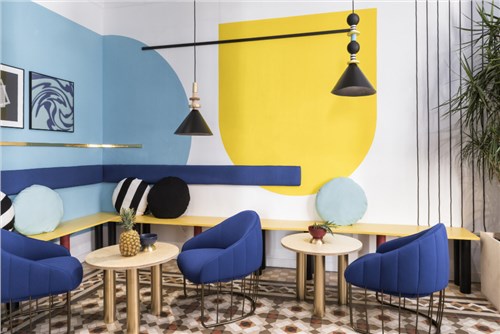Masquespacio:瓦伦西亚Nozomi寿司吧设计
Nozomi Suhi Bar, Valencia
Spanish creative consultancy Masquespacio present their last project Nozomi Sushi Bar. The project realized in Valencia consists in the branding and interior design for the new sushi restaurant from José Miguel Herrera and Nuria Morell, both passionate by the Japanese culture and specialists in authentic traditional sushi.
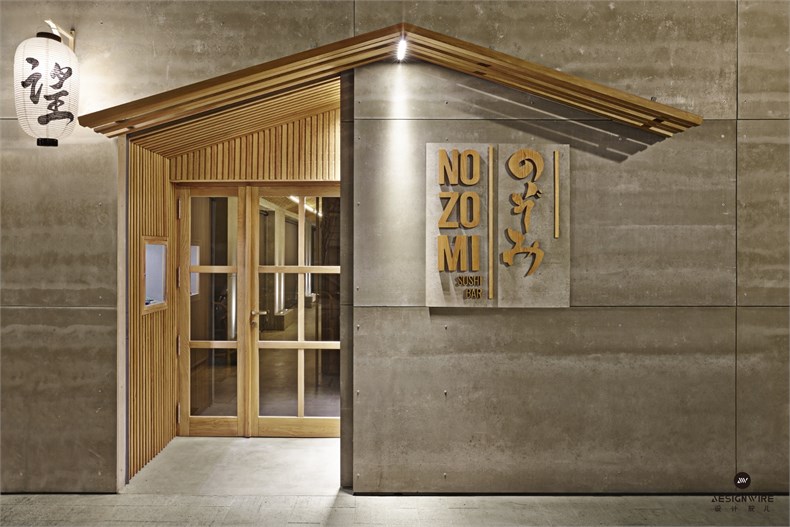
西班牙创意工作室Masquespacio完成了他们最后一个项目—Nozomi寿司吧。设计涵盖室内设计,灯光设计,装饰设计,家居设计以及餐厅的餐具设计,标示设计,菜单设计等等全套品牌设计内容。希望展示出日式风情的精髓与当代性。项目中大量运用了木材,其自然而温暖的缩略表达了日本建筑与街景的新诠释。
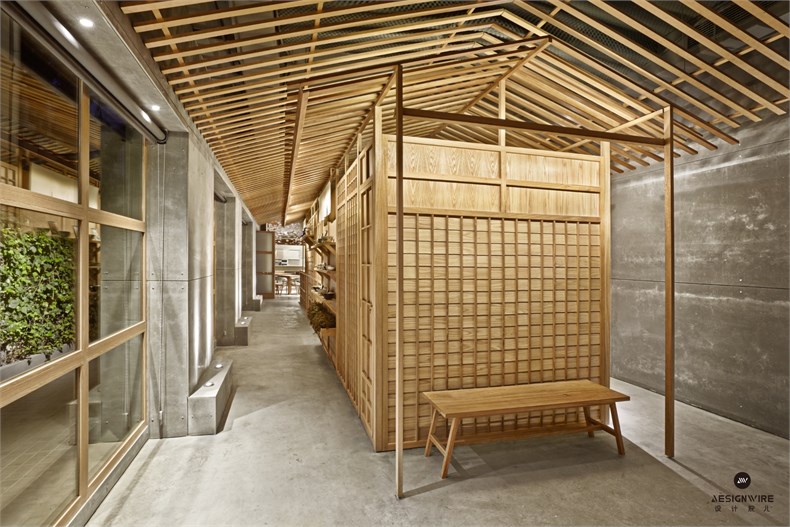
The project in which Masquespaciobegan to work in January 2014starts with a previous study of Japanese culture and the origin of sushi. A study in which was involved the whole team of the Spanish creative consultancy to understand and represent the Japanese culture through the brand image and specially through the interior of the new restaurant from José Miguel Herrera and Nuria Morell. The brand name Nozomi was chosen by the founders of this project being a ‘Japanese high speed bullet train’ and at the same time meaning ‘fulfilled dream’; two significances with which with José Miguel and Nuria felt identified and that create a duality present continuously through the whole project: “Emotional classic’ and ‘Rational contemporary’.
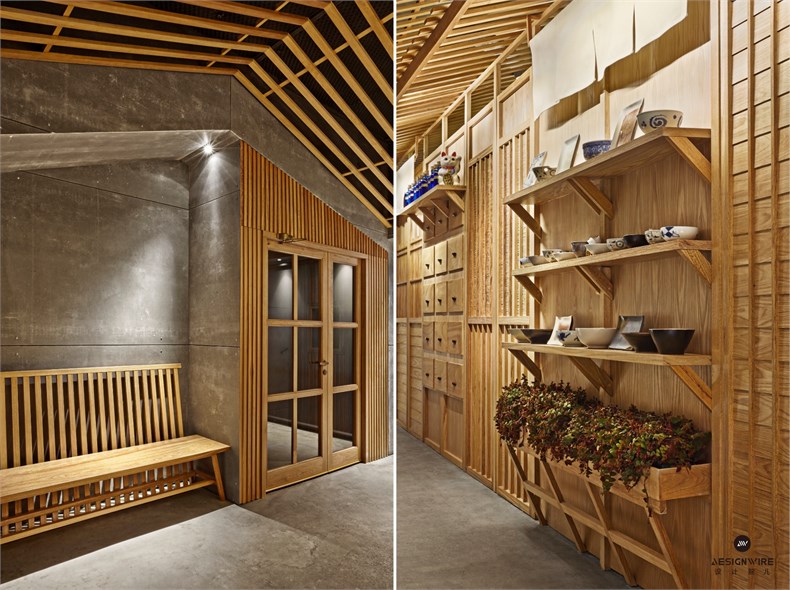
Starting with the brand image we can see how this duality is represented on one way as ‘Rational contemporary’ through the Western typography, while on the other the hiragana (Japanese writing) shows the “Emotional classic’ touch through its logo.
Now talking about the interior design of this local of 233 m2 we can see how it plays more intensely with the expressed duality. On one hand being ‘Rational contemporary’ through the pure state of concrete and grays, mainly present in the most structural parts such as walls, ceilings and floors. On the other hand the ‘Emotional classic’ aspect makes its introduction thanks to the carpentry, its hand finishes and the warmth of natural wood.
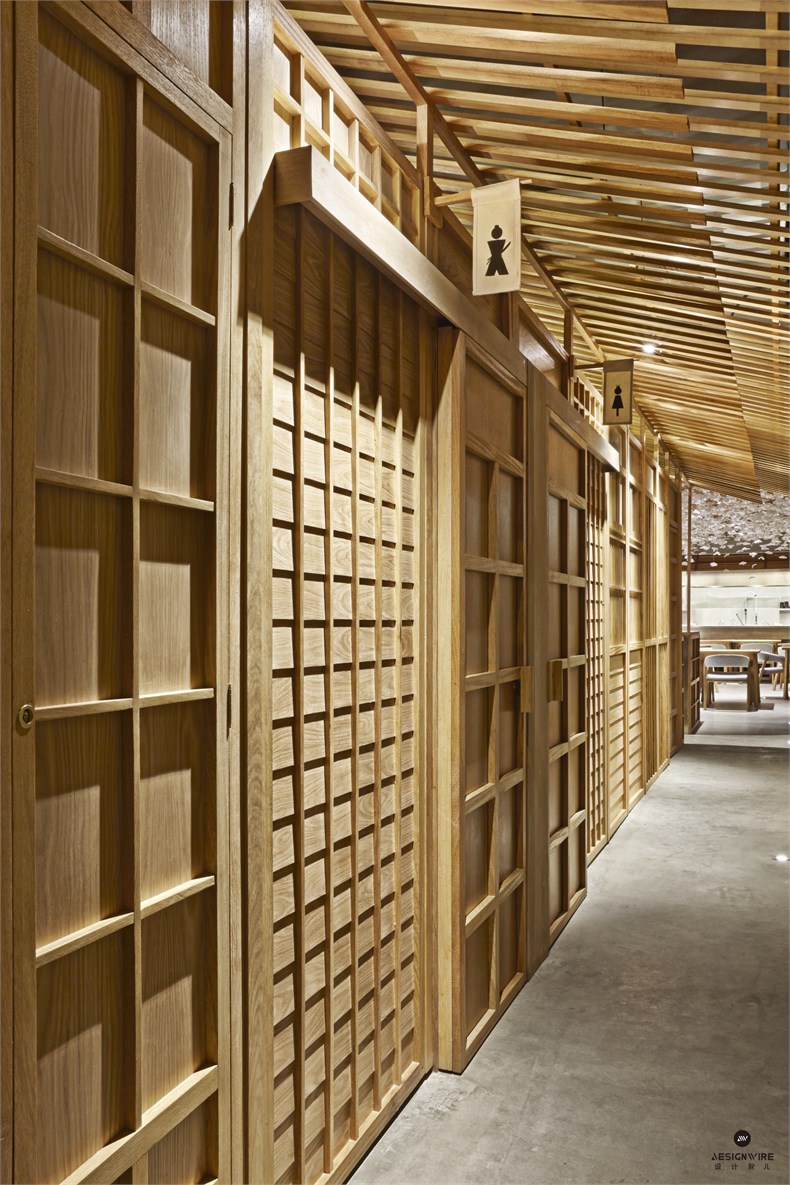
整个餐厅的面积233平方米。入口的屋檐,灯笼,玄关以及清水混凝土体现了浓郁,古典同时现代的日式风情。
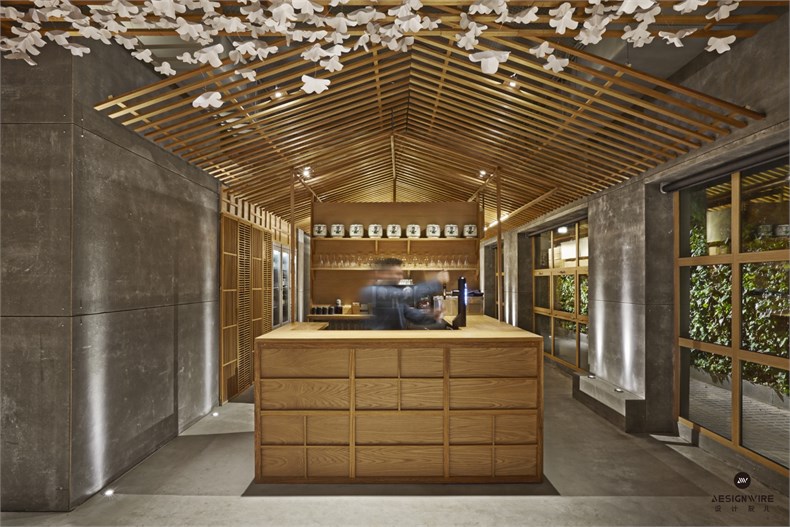
Arriving to the restaurant you can see how these two aspects are attracting the attention. The concrete from the façade and the entry that clearly represents the classic Japanese carpentry. Walking through the door of the restaurant it can be appreciated how a central cube creates two corridors toward the central lounge that incorporates both decorative elements as well as the bathrooms and the warehouse, creating a continuous and open flow very typical for the architecture of the Eastern country. On the aesthetic level we can see how a Japanese village street has been reinterpreted through different modules, traduced here into a market, pharmacy, doors and windows. The rooftops in turn interpret the most contemporary and rational part with a clearly Japanese inclination.
进入餐厅后,首先看见的是一个体现日本建筑与城市街景风情的木质长体量小建筑。人们经过它和等候区进入餐厅用餐区。这个小建筑不仅是餐厅重要的装饰元素,也承担了卫生间和仓库的功能。
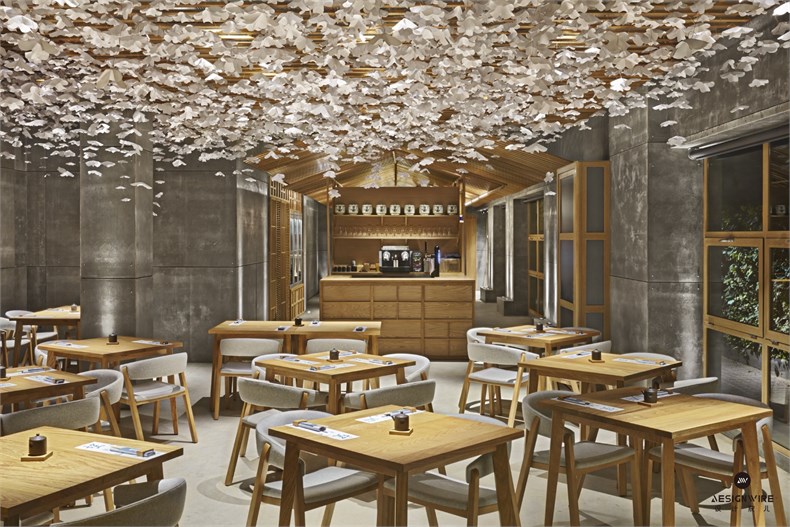
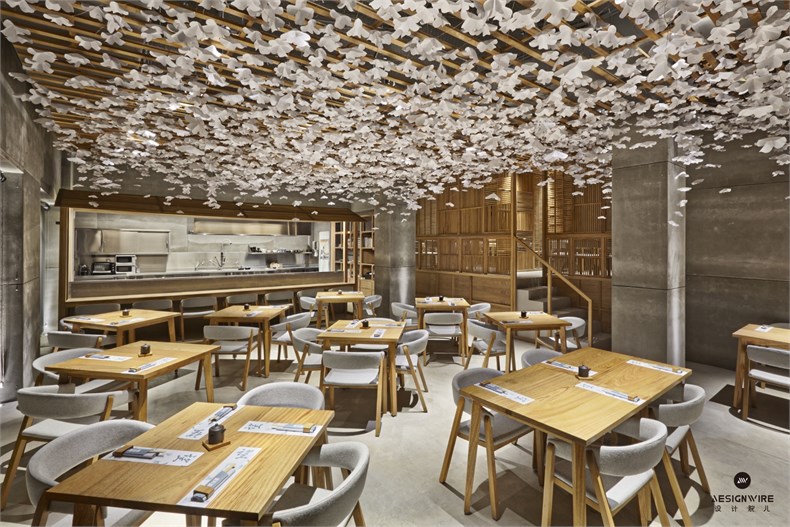
Ana Milena Hernández Palacios: “We have been studying photography from the most authentic Japanese streets with the aim to create a reinterpretation on a metaphoric way of those streets. During the execution of the project many people has been nominating it as a typical street from Kyoto, something that happened mainly because it is where the most traditional Japanese houses are preserved today.”
The idea behind the first part of the restaurant is to make the customer live the experience of walking through a Japanese street, while he is being stunned by its beauty and getting excited about the construction details of Japanese carpentry, before reaching the principal lounge where he could enjoy not only an authentic sushi, but at the same time a unique experience below a cherry-tree as if he sits in a Japanese courtyard. From his seat each diner looks up at the show created in the sushi bar that reinterprets a traditional sushi peddler, known as the first mobile fast food stall. In the meantime the cherry-tree’s flowers, inspired by the origami, bloom naturally.
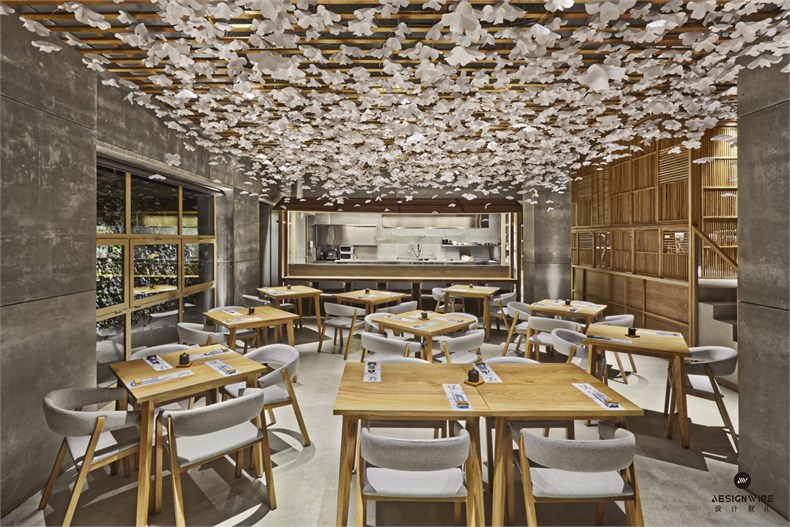
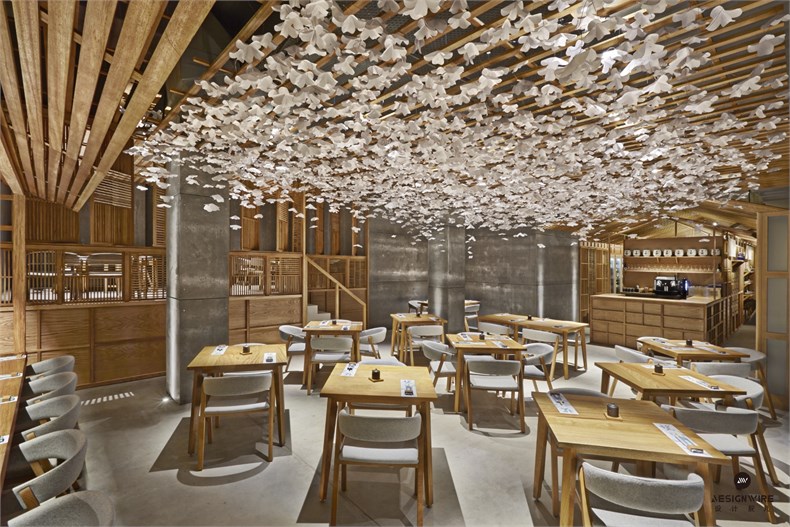
设计希望给客人仿佛走在日本古代街道上的感受。药房,窗户,门,屋顶等要素都真实却又全新的展示给人们。小建筑不仅是餐厅重要的装饰元素,也承担了卫生间和仓库的功能。
当人们穿过这条走廊,已被日本风情撩拨得相当兴奋和入戏。最终,人们到达了主用餐区,这里不仅有正宗的寿司,还有天花板上的樱花折纸艺术品。设计师希望营造出客人坐在樱花庭院的氛围。这些灵感来自与设计师观看日本京都街头照片的体会。
折纸樱花,绽放出自然。
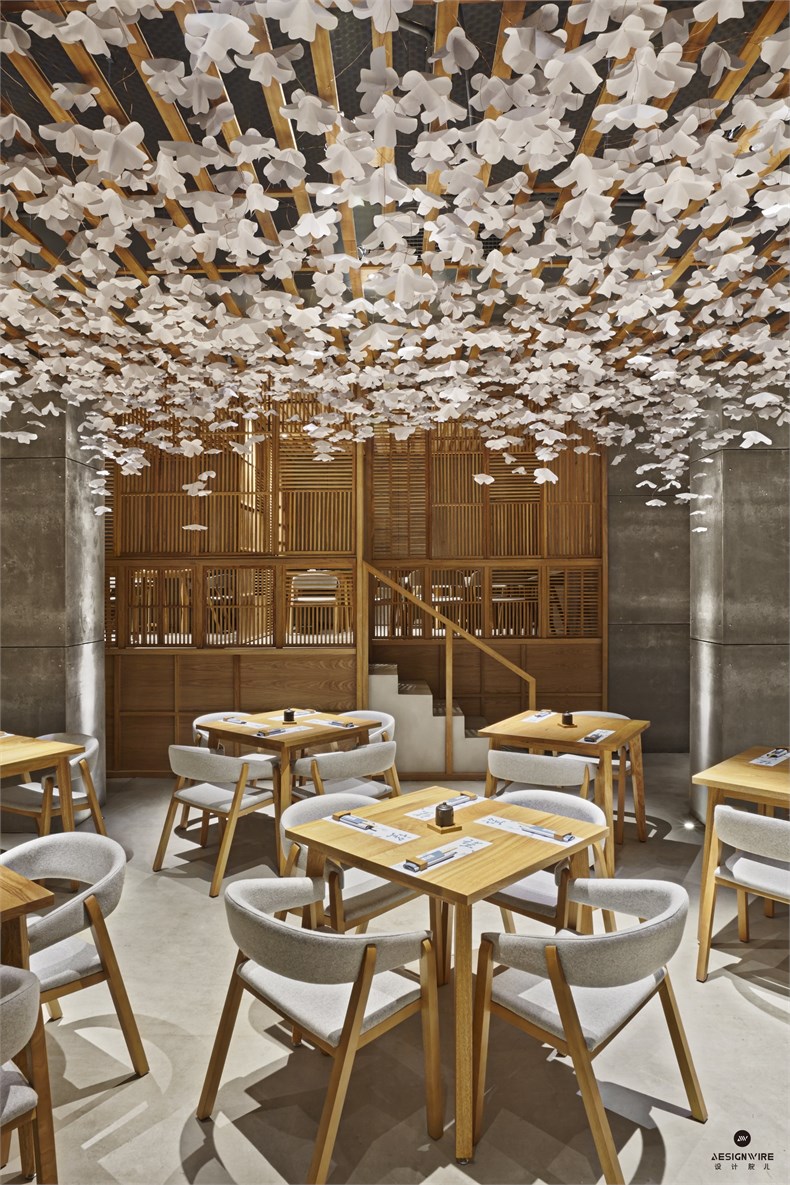
Last but not least the private zone allows separate environments for major intimacy, without isolating the diner from the show projected more below and maintaining the shadows generated by the lightings, also inspired by the more minimal Japan, highlighting the irregular and unique carpentry.
Through this project Masquespacio illustrates its ability to work on projects from different cultures, showing their interest to study each project meticulously with the aim to create a unique history for clients and their consumers.
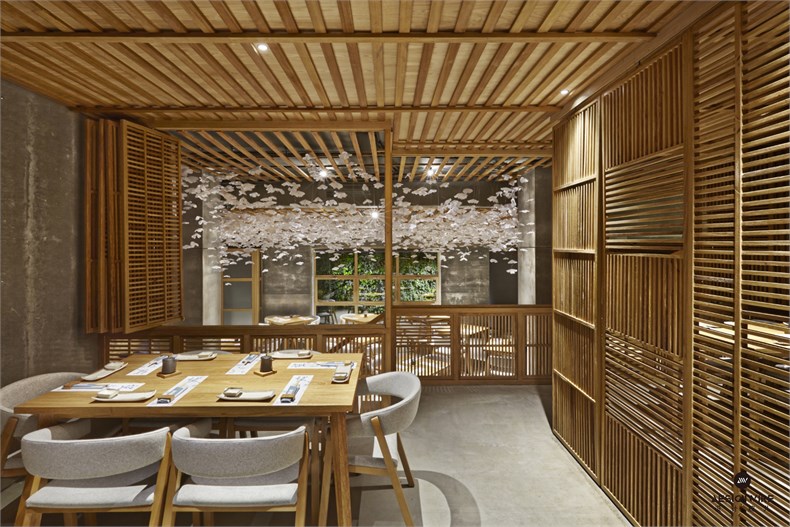
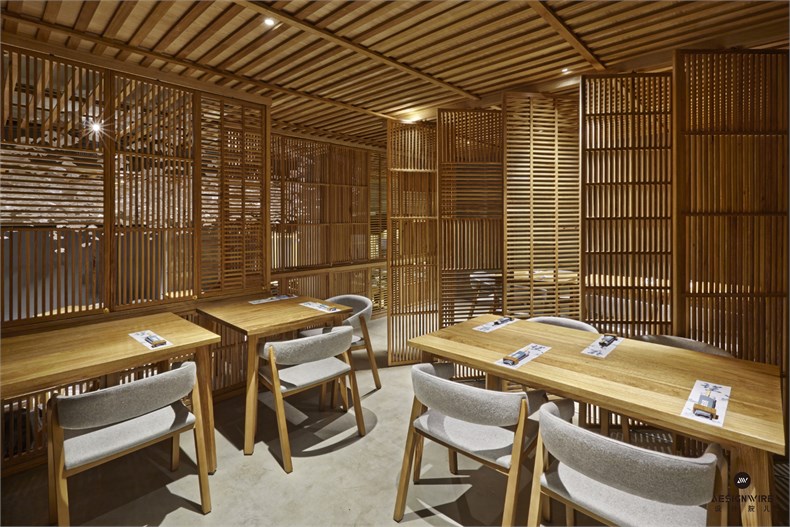
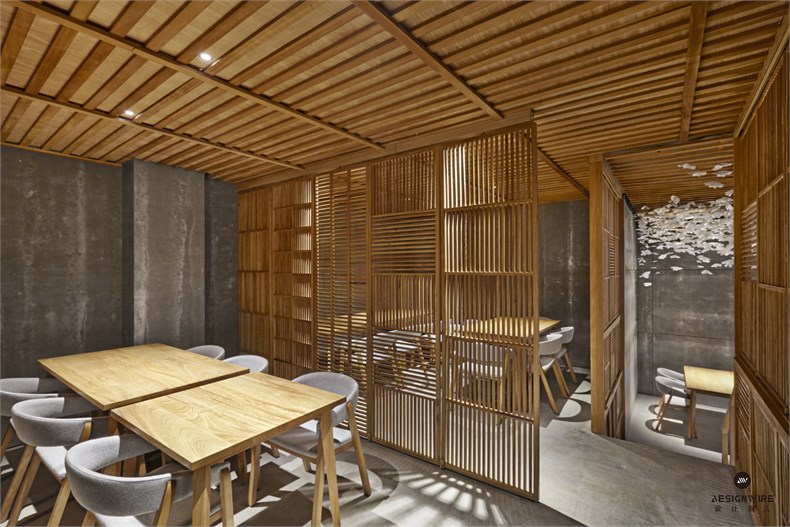
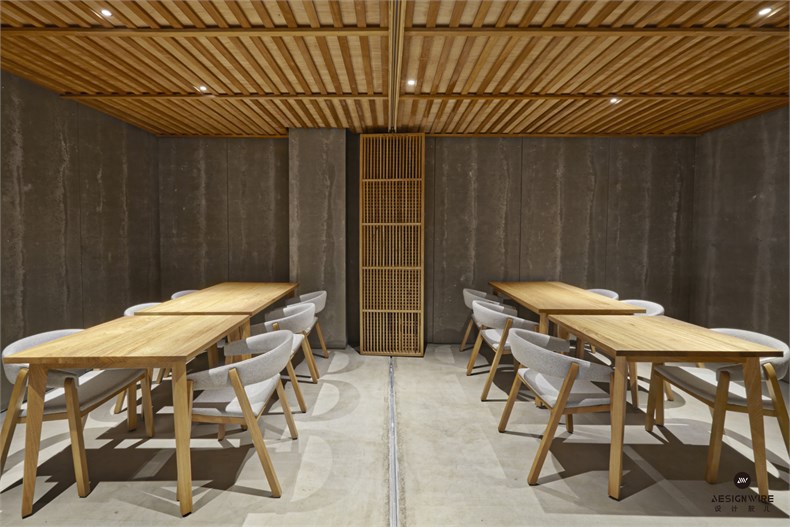
亲密用餐区具有可以灵活移动的木质通透隔断。折纸樱花,绽放出自然。
设计师安排了一系列的亲密用餐区,这些餐区可以依靠木质通透隔断划分出更多的小用餐区。光影丰富,气氛温暖,和风浓郁。
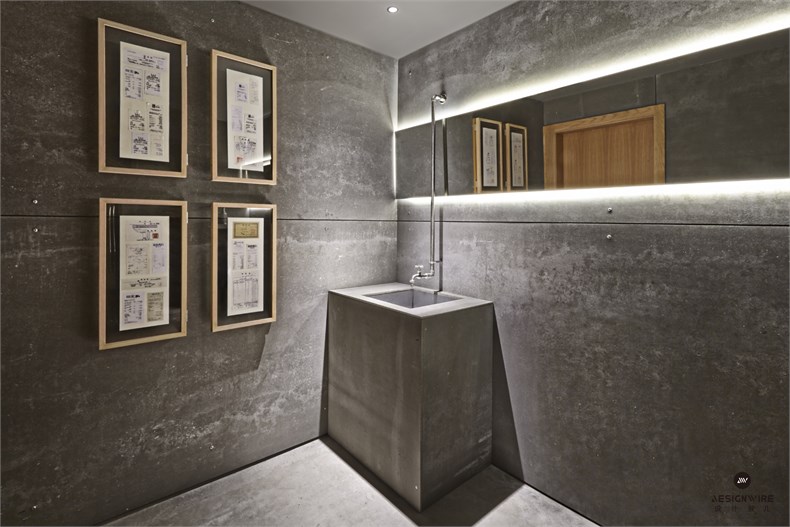
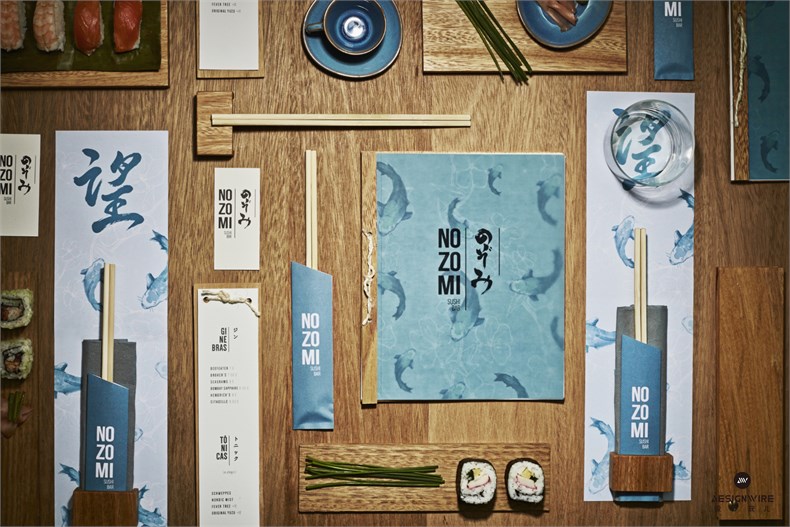
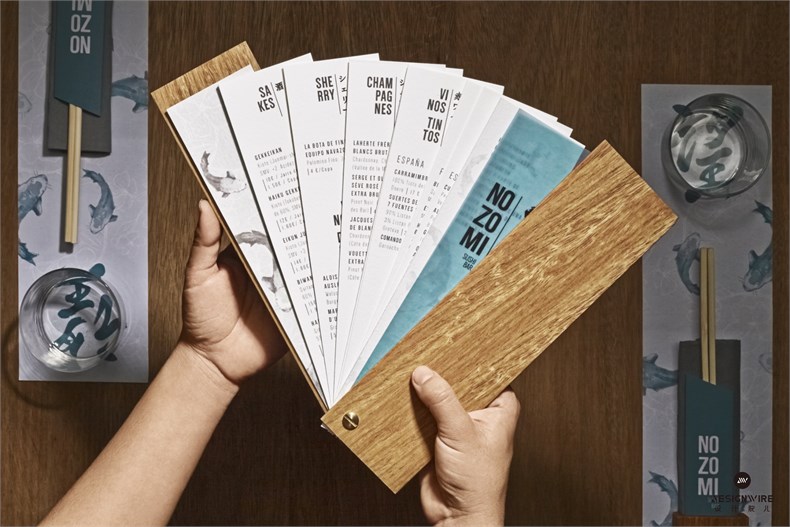
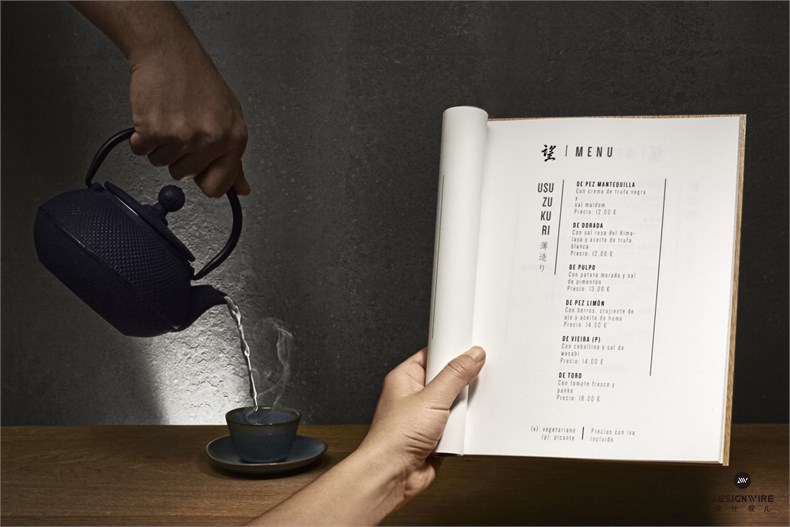
项目完工:2014年12月
项目面积:233 m2
客户:Nozomi Sushi Bar
设计公司:Masquespacio
创意总监:Ana Milena Hernández Palacios
创意设计师:Nuria Martínez
建筑设计师:VirgíniaHinarejos
平面设计师:Jairo Pérez, Ana Diaz
建设:Helix
摄影: David Rodríguez y Carlos Huecas
材料:
Chairs & upholstery: Missana
Wood: Cerejeira / Roble
Fabrics chairs: Kvadrat
Edit by Designwire
